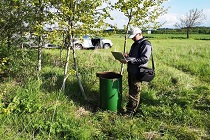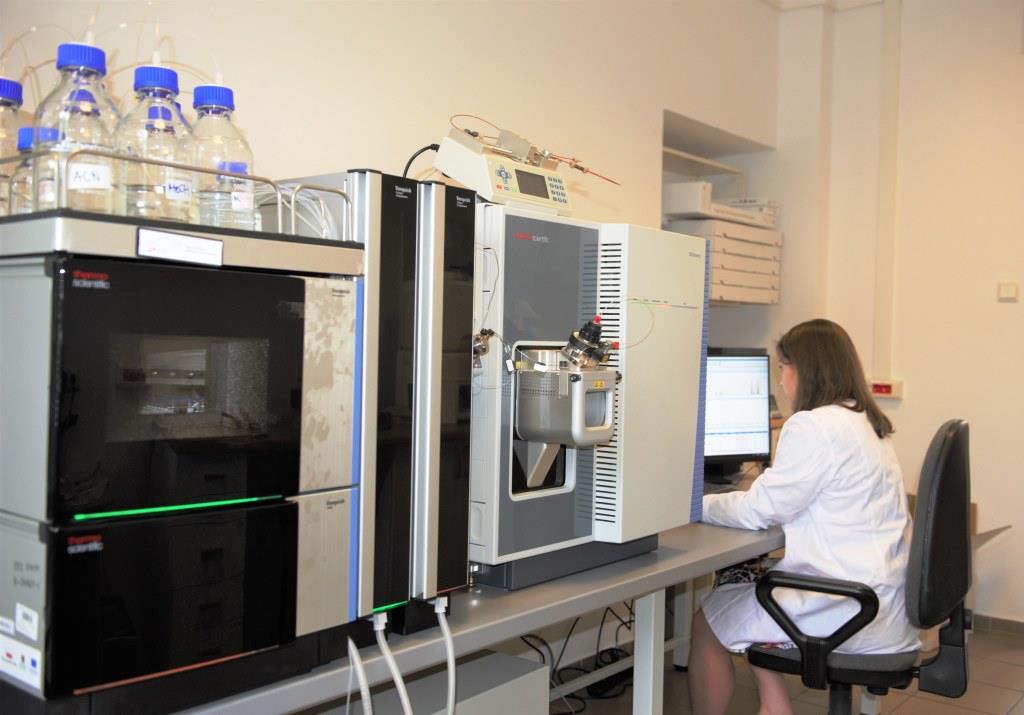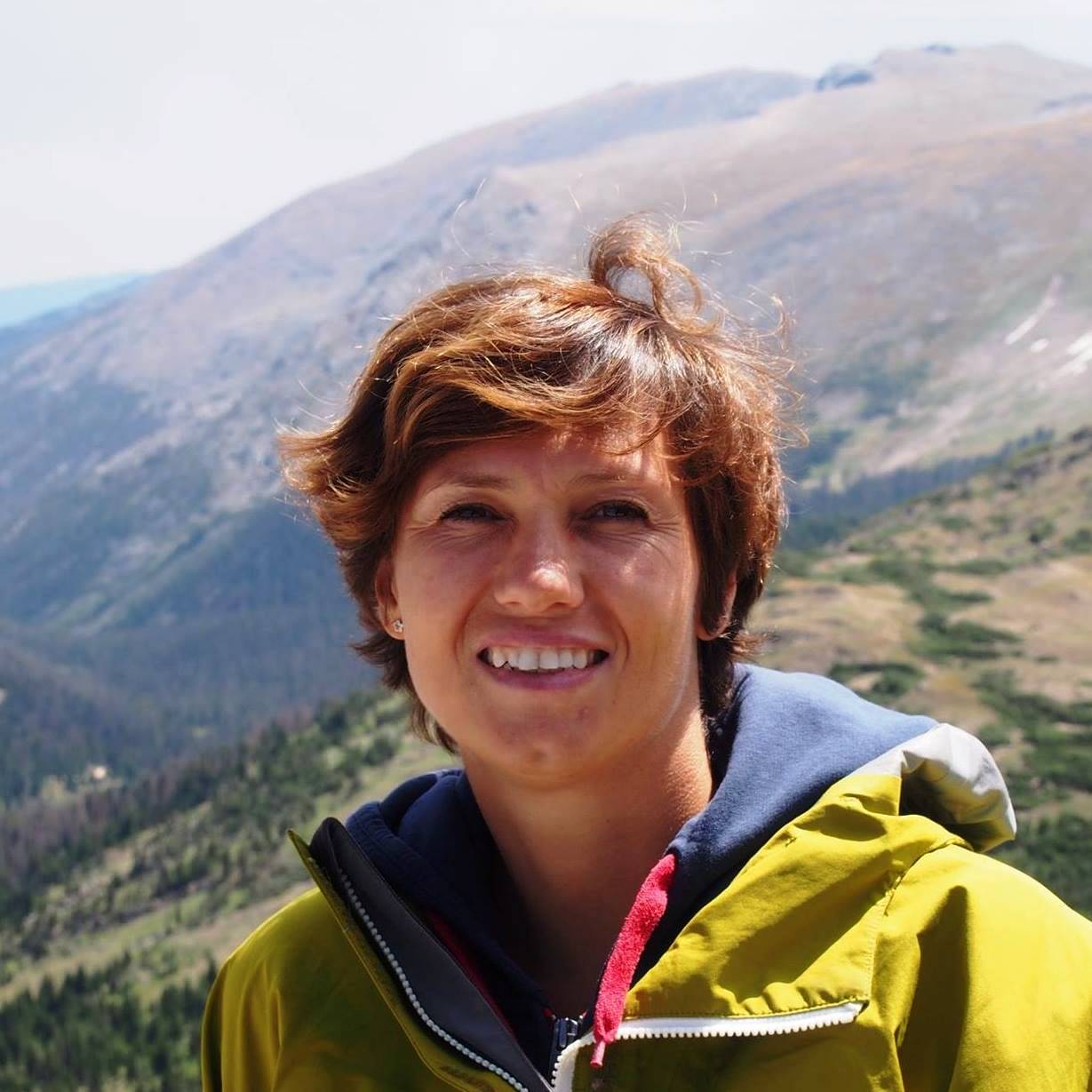 The Polish Geological Institute - NRI keeps track of current challenges and threats to groundwater condition and improves research, analytical and interpretation methods. Carrying out measurements and hydrogeological studies to assess the quantitative status and chemical composition of the groundwater, it regularly assesses the hydrogeological situation and forecasts its changes.
The Polish Geological Institute - NRI keeps track of current challenges and threats to groundwater condition and improves research, analytical and interpretation methods. Carrying out measurements and hydrogeological studies to assess the quantitative status and chemical composition of the groundwater, it regularly assesses the hydrogeological situation and forecasts its changes.
Anna Bagińska, head of the PGI-NRI Bureau of Promotion and Communication, talks about the modernization of the groundwater monitoring network and studies aimed at extending the observations of "new contaminants" with Dr. Eng. Anna Kuczyńska – head of the Department of Groundwater Monitoring.
Anna Bagińska: In 2020, the Polish Geological Institute - NRI obtained funds from the European Funds under the Infrastructure and Environment Operational Program and from the State Budget, to implement two tasks related to groundwater monitoring. What exactly do these tasks concern?
Anna Kuczyńska: The tasks concern the development of groundwater monitoring, which we carry out as part of our duties as the Polish Hydrogeological Survey. The first task is connected with equipping 300 points of our groundwater monitoring network with automatic devices, which will make it possible to measure the position of the water table at any frequency and transfer the data to PGI-NRI servers almost in real-time. At present, the network comprises 1246 surveying points. After the completion of the task at more than half of the points the measurements will be performed automatically.
The second task is to develop monitoring of the chemical status of groundwater. At present, the chemical state of waters is determined by examining the contents of inorganic (40 indicators) and organic (60 indicators) compounds. While carrying out the task, we intend to increase the analytic capabilities of the PGI-NRI Chemical Laboratory in the field of analyzing the content of substances referred to as "emerging contaminants".

PGI-NRI employees using automatic measuring devices. Photo: J. Bruczynska
A.B: "New contaminants" – meaning which?
A.K: "New contaminants" are chemically complex synthetic organic substances that either could not be detected previously due to analytical method limitations or have recently been found in the aquatic environment. Often these compounds are toxic and can pose a threat to aquatic organisms and human health, causing hormonal, metabolic, neurological or immunological changes, among other things. Acceptable concentration ranges in groundwater are still unknown for many of them.
Among the "new contaminants" we can distinguish chemical substances commonly used in industry and present in our everyday lives, e.g. pharmaceuticals, personal hygiene products, plant protection products and per- and polyfluoroalkyl compounds used e.g. in the production of outdoor clothes and fire-fighting foams. "New contaminants" appear in the environment as a result of civilization development and intensification of expansive human activities.
A.B: So far, when studying groundwater chemical status, we haven't determined substances from the "new contaminants" group. - Why did we start working in this direction?
A.K: Research on groundwater contamination with "new contaminant" compounds has been conducted for many years, but it has intensified in the last decade, resulting in many documented cases of groundwater contamination with these compounds, including drinking water intakes.
The substances we are talking about are currently not included in the EU directives as substances that should be included in the national groundwater monitoring programs, although in 2014 the European Commission noticed the need to address this problem and included a provision in the preamble of Directive 2014/80/EU indicating the need to look for "new contaminants" that pose a threat to groundwater status. This gave rise to the Commission's work to establish a so-called groundwater watch list, which includes indicators that, based on existing research results, may indicate a threat to groundwater quality. The purpose of establishing the watch list is to provide support for EU countries to initiate the process and prioritize groundwater monitoring for "new contaminants," which are a very large group of substances. Mandatory groundwater monitoring in EU countries for "new contaminants" is certainly a matter of time and it is best to prepare for it now.
Carrying out the tasks of the Polish Hydrogeological Survey, we have been following the topic of new groundwater contamination for years, participating in the work of expert groups of the Association of European Geological Services (EuroGeoSurveys), as well as conducting our own scientific research in this field. We conducted the first such study in 2016 and it actually confirmed groundwater contamination in points of the national groundwater monitoring network with pharmaceuticals, which strengthened our conviction that the problem also concerns groundwater in Poland and that attention should be given to it.
National funds for groundwater monitoring are today limited to the tasks formally required by EU and national regulations. The study of "new contaminants" of groundwater is not yet obligatory, therefore we have no basis for financing the studies as part of the State Environmental Monitoring system.
A.B: What apparatus do we need if we want to determine the content of "new contaminants" in groundwater - and do we need to establish new procedures - if so, which ones?
A.K: Due to the nature of these substances, their concentration levels and sources of their origin in the aquatic environment, their testing in groundwater requires specialized and modern analytical equipment as well as the development of appropriate field procedures, which guarantee that the obtained analytical results reflect the actual state of the aquatic environment and do not originate, for example, from incorrect water sampling.

Installation of devices for automatic groundwater table measurement. Photo: Merazet S.A.
In terms of instrumentation, there are a variety of analytical methods using both gas and liquid chromatographic techniques, applied depending on the type of substance being determined. It is important to match the methodology to the expected contaminant concentration levels, and these will be rather low or very low in groundwater. It should also be remembered that research on "new contaminants" will require constant development and adjustment to new needs as the watch list and EC requirements grow longer. Therefore, as part of the task, we decided to purchase a liquid chromatograph coupled to a quadrupole mass spectrometer (LC-MS-MS) that meets the above requirements.
Considering the low concentrations of contaminants and their widespread use in daily life, field work related to water sampling requires special care. It is necessary to develop appropriate sampling procedures so that the results are not burdened with errors due to the influence of external factors. Groundwater chemical monitoring is a huge logistical challenge, and its smooth execution depends on field procedures, so they must be worked out in detail. Performing analytic tests in the PGI-NRI laboratory provides an opportunity to refine and optimize quality control processes during all stages of sampling: from field trips, sample collection and transport to analysis in the laboratory.

Liquid chromatograph coupled to a tandem mass spectrometer (LC-MS/MS) from Thermo scientific
A.B: The experimental work started in 2021. How many test points will have their groundwater samples tested?
A.K: We are currently at the stage of refining analytical methods. Once the analytical methods are developed, we will begin experimental work to develop quality control procedures. We have plans to sample and analyze water samples from about 100 points of the groundwater monitoring network. The points have already been selected and water sampling should start at the turn of August and September.

Installation of devices for automatic groundwater table measurement. Photo: Merazet S.A.
A.B: What will be the benefits from PGI-NRI carrying out these tasks?
A.K: Our experience shows that the use of automatic equipment significantly improves the quality of measurement results, allows for flexible adjustment of their frequency to the needs of hydrogeological analyses and the specificity of water-bearing media and, most importantly, definitely accelerates access to measurement data, which is of particular importance from the perspective of assessing the current hydrogeological situation and its prognosis. Current access to measurement results is particularly important in periods of hydrogeological hazards, i.e. when we deal with hydrogeological lows during droughts or hydrogeological highs (floods) during floods.

Groundwater table measurement data transmission module. Photo: Merazet S.A
We have obtained a total of 3.409 million PLN for the task entitled the "Expansion of the MWP automatic measurement and data transmission system - equipping at least 300 points of the groundwater monitoring and research network". Within the framework of the project, not only the measurement apparatus has been purchased and installed at the research points, but also the regional supervisors of groundwater monitoring have been equipped with IT equipment necessary to operate the system in the field. When the project implementation is completed, more than a half of the points of the national groundwater monitoring network will be automated. Ultimately, we aim to automate the entire network.
With respect to chemical status monitoring, continuous and systematic development of research and analytical methods is necessary. This is necessary for reliable observation of the behavior of aquifer systems in response to anthropogenic pressures changing over time. 30 years ago, the main source of groundwater pollution was agriculture, disordered water and sewage management, industry, which was reflected mainly in elevated concentrations of nutrients and heavy metals. Currently, in the water environment we can find, apart from the above-mentioned substances, also pollutants such as plant protection agents, their metabolites, numerous chemical compounds, which are used in the production of personal hygiene products (e.g. suntan lotions or mosquito repellents), clothing, fire-fighting foams, pharmaceuticals, etc. Their presence in the environment is influenced by intensive economic development, which has been observed particularly in the last 20 years, development of new industries reaching for innovative technologies with the use of new chemical substances, as well as greater availability and supply of chemical products, including pharmaceuticals.
A total of PLN 3.1 million was raised for the implementation of the task "Program of studies on new groundwater contaminants for monitoring of substances from the watch list". The project will make it possible to purchase a high-class liquid chromatograph and its equipment, provide training in its operation and application, develop laboratory analytical methods to detect 23 compounds from two groups of new contaminants, i.e. pharmaceuticals and perfluorinated compounds (PFAS), and develop field quality control procedures during water sampling.
The tasks received co-financing through the 2nd priority call of the Infrastructure and Environment Operational Programme 2014-2020 "Environmental protection, including adaptation to climate change", Measure 2.1 "Adaptation to climate change together with protection and increasing resilience to disasters, in particular natural disasters, and environmental monitoring" (85% co-financing) and the state budget (15% co-financing).

Measuring data transmission module. Photo: Merazet S.A
AB: Thank you for the interview.

Dr inż. Anna Kuczyńska - Head of the Groundwater Monitoring Unit of the Polish Geological Institute-PIB
She has worked at the Polish Geological Institute - NRI since 2009. She was the manager and coordinator of many projects connected with organization of groundwater monitoring in the entire country and analysis and interpretation of their results. She is an expert in EU groundwater law, a long-term member of task groups on groundwater and new contaminants at the European Commission and a member of the steering committee of the EuroGeoSurveys Water Resources Expert Group. She is the author of many publications on groundwater monitoring and assessment.
Translated by Tomasz Trzpil (PGI-NRI)
Project: Program of studies of new groundwater contaminants for monitoring of watch list substances Project value: 3,100,000 PLN
Project: Expansion of the MWP automatic measurement apparatus and data transmission system - equipping not less than 300 points of the groundwater monitoring and research network with automatic measurement devices Project value: PLN 3,409,000















 PGI-NRI offer
PGI-NRI offer Mineral resources of Poland
Mineral resources of Poland  Oil and Gas in Poland
Oil and Gas in Poland 




 Subscribe to RSS Feed
Subscribe to RSS Feed